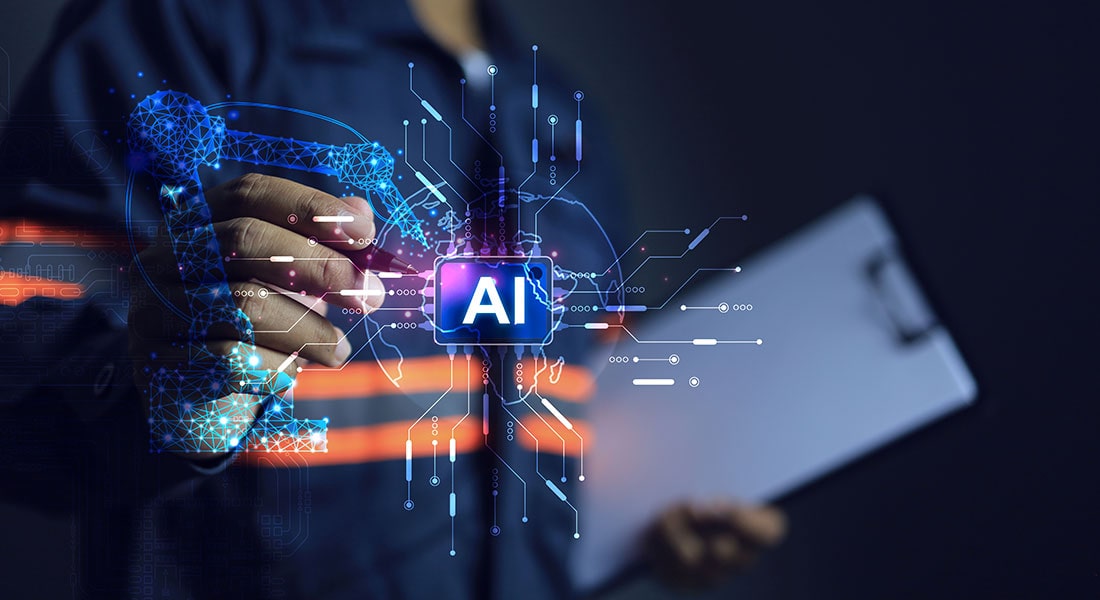Is AI-Enhanced Gamification the Key to eLearning Success?

Traditional eLearning often struggles with monotony, a lack of personalized feedback, and difficulty keeping learners motivated. This leads to frustration, low knowledge retention, and dismal completion statistics. But what if there was a way to make eLearning engaging, personalized, and even fun? Enter AI-enhanced gamification – a potential game-changer that could finally unlock the true potential of eLearning.
Trying to Leverage Technology to Attain eLearning Success? Try AI-Enhanced Gamification!
Here are a few benefits to understand more about it -
- Increased motivation and engagement
- Improved knowledge retention
- Data-driven insights
- Real-world skill practice
- Behavioral change
What is AI-Enhanced eLearning Gamification?
Let's start with the basics. Gamification in eLearning means taking elements we love from games – like points, badges, progress levels, and challenges – and applying them to the learning process. AI takes gamification to the next level. It can analyze learner behavior, personalize challenges in real-time, provide tailored feedback, suggest relevant content, and even create branching scenarios that adapt based on learner choices. Think of it as a smart game master for your eLearning course. Before we start understanding more about gamification and how AI can enhance it, it's crucial to differentiate between gamification and game-based learning. Here are a few basic differences between them.

Key Benefits of AI-Enhanced Gamification for eLearning
1. Increased Motivation & Engagement
AI-powered gamification taps into our innate desire for reward, recognition, and a sense of accomplishment. Points, badges, leaderboards, and progress bars provide instant gratification, while adaptive challenges maintain an optimal level of difficulty – not too easy, not too hard. This keeps learners engaged, reduces boredom, and makes them want to come back for more.
→ Register for Webinar Now: AI and Gamification
2. Improved Knowledge Retention
Gamification isn't just about fun! When done right, it reinforces learning. AI can personalize quizzes, create interactive scenarios that mimic real-world situations, and introduce spaced repetition to help information stick. By actively engaging with the material in a playful way, learners are more likely to understand and remember key concepts.
3. Personalized Learning Paths
One of the biggest advantages of AI is its ability to adapt. AI-powered gamification can analyze learner performance in real-time, identifying strengths and weaknesses. It can then serve up content, challenges, and practice questions tailored to each individual's needs. This prevents frustration for those who are struggling and keeps advanced learners challenged.
4. Data-Driven Insights
AI-enhanced gamification is a treasure trove of data. It tracks learner interactions, progress, and outcomes far more comprehensively than traditional eLearning tools. Instructors and course designers can use these analytics to identify areas for improvement, pinpoint common knowledge gaps, and continuously refine their custom eLearning content to achieve better results.
5. Enhanced Collaboration and Teamwork
AI-powered gamification can introduce collaborative challenges, quests, or simulations. Learners can work together, pool their knowledge, and earn rewards based on team performance. This can be particularly valuable for eLearning environments focused on developing soft skills and workplace cooperation. Here are a few platforms you can use for workplace collaboration.

6. Real-World Skill Practice
AI can create realistic, branching scenarios that mimic professional tasks or decision-making processes. Game mechanics like scoring, adaptive difficulty, and personalized feedback make it safe for learners to practice skills in a consequence-driven yet low-risk environment. Think of simulations for sales training, customer service, or even medical diagnosis.
7. Behavioral Change
AI-powered gamification can go beyond knowledge transfer to target behavioral change. By tracking learner choices and progress, it can incentivize positive habits, nudge learners towards better decision-making, and help track progress on behaviorally-focused learning programs (e.g., time management, conflict resolution, diversity and inclusion training).
8. Accessibility and Inclusivity
AI can make eLearning more accessible by adapting content and challenges to the needs of learners with different abilities. This might include text-to-speech options, adjustable game difficulty, or alternative ways to demonstrate mastery, making eLearning more equitable and inclusive.
What can be the Key Considerations and Challenges Associated with it?
- Not a Magic Bullet: It's important to be realistic. AI-enhanced gamification, while powerful, isn't a silver bullet for every eLearning challenge. Successful implementation requires careful planning and design to ensure the game elements meaningfully support learning goals rather than becoming mere distractions.
- Cost and Expertise: Developing AI-powered gamified eLearning courses can be more complex and potentially more expensive than traditional approaches. You might need specialized developers and instructional designers with both gamification and AI knowledge.
- The Importance of Good Design: Poorly designed gamification can backfire. Overly competitive elements might discourage some learners, and rewards that are too easy to obtain lose their value. It's vital to strike a balance between challenge and reward.
Wrapping Up!
AI-enhanced gamification has the potential to transform eLearning from a passive experience into an engaging, personalized, and results-driven one. It can boost motivation, drive knowledge retention, and provide rich data to improve learning outcomes. If you want to understand more about gamification and how AI can enhance it, sign up for this webinar now and save your seat!





![Gamification: Changing the Way Learning Takes Place [Video]](https://blog.commlabindia.com/hubfs/Imported_Blog_Media/gamification-for-learning.jpg)